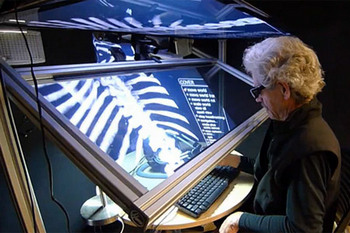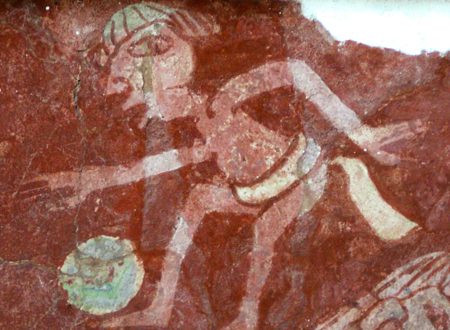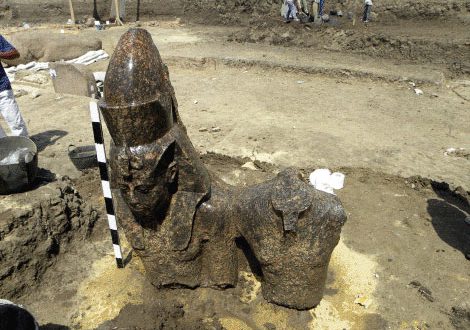 During a short inspection tour of the Egyptian Museum, Cairo, Dr. Zahi Hawass, Egypt’s newly appointed Minister of Antiquities, has announced that the restoration of seventy objects, damaged during the failed looting attempt on January 28, has begun and will be completed within five days. The restoration project includes the statue of Tutankhamun standing on the back of a panther and a New Kingdom wooden sarcophagus, both damaged by the criminals.
During a short inspection tour of the Egyptian Museum, Cairo, Dr. Zahi Hawass, Egypt’s newly appointed Minister of Antiquities, has announced that the restoration of seventy objects, damaged during the failed looting attempt on January 28, has begun and will be completed within five days. The restoration project includes the statue of Tutankhamun standing on the back of a panther and a New Kingdom wooden sarcophagus, both damaged by the criminals.
“One showcase in the Ahkenatengalleries was smashed; it contained a standing statue of the king carrying an offering tray. While the showcase is badly damaged, the statue sustained very minor damage and is repairable,” Dr Hawass explains in the statement. “Anothervirtine that was smashed contained one of King Tutankhamuns walking sticks. The gilded stick isbroken into two pieces, and can be restored. The other King Tutankhamun object that was damagedwas the wooden statue of the king standing on the back of a panther. Both objects were taken out oftheir showcase and were dropped on the floor after the thieves realized that they were not made ofgold.”
He added that the two mummies that were reported as damaged at the Egyptian Museum, Cairo, were in fact unidentified skulls dating to the Late Period; they do not belong to royal mummies. They were being temporarily housed in the storage room next to the CT scanner lab, which is in the grounds of the museum. The skulls were there to be used to test the CT scanner.

“When the crisis erupted, I took a very quick walk through the museum and thought that the two skulls thrown on the floor of one of the side rooms might belong to some of the royal mummies examined in our DNA research project on the royal mummies (the Egyptian Mummy Project), namely those found in KV55. However, I examined all of the royal mummies last week and then reexamined them again today; I am happy to report that they all are safe and untouched, including those of Akhenatens family members. As for these two skulls, they were kept in a storeroom next to the CT scanner lab, and were used for testing the machine.“
Dr. Hawass further announced that steps are being taken to reopen all of the Egyptian archaeological sites to visitors. During his statements Dr. Hawass asserted that the sites of Memphis, Saqqara, and Abusir are secure and safeguarded by the army and honest Egyptian people.
So far, the SCA recognizes two incidents related to antiquities have happened:
1)The break-in at the Egyptian Museum, Cairo, resulting in 70 broken objects,all of which can and will be restored, and
2) The break-in at the storage magazine at Qantara, in the Sinai. We do not know exactly how many objects were stolen from this magazine, but a total of 6 boxes were taken. All of these objects came from excavations or were being stored there from the Port Said Museum.As of today, 288 objects have been returned, and I am sure that any other artifacts still missing from this magazine will be returned. [SCAStatement, February 3, 2011]
Despite various stories on the web that some tombs and storage magazines were indeed accessed by vandals, so far, not much about the extent of vandalism, and what exactly is – or isn’t – damaged is known. Yet, reports like this one from Saqqara, do give good hopes for the majority of archaeological treasures to be intact: “He also showed me a handful of tombs where robbers had succeeded in breaking steel padlocks on the doors. Once the robbers realized the rooms were empty, Farag says, they ignored the gorgeous reliefs on the walls and went elsewhere, presumably hoping to find gold, jewels, and other treasures they could carry away.”
Good sources to check for updates are: Saqqara.nl, Culture Grrl, KV64, the SCA website,drhawass.com, the eloquentpeasent.com, and Owen’s Unreported Heritage News.





